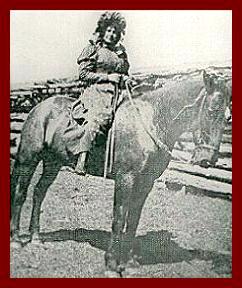
Ellen lived with Jim Averell at his home, and worked for him in
his general store and cafe, serving meals to the different wagon and travelers coming through. Over the months, in 1886 she helped Jim improve upon his
land. It was time to get her own land, so they decided to enlarge
their acreage. She would file on land that was back to back with
his. She had to file under her maiden name of Watson. No one knew
they were secretly engaged earlier in the year. We also don't know if they were actually married, since the marriage application was never returned with who married them.
According to her homestead filings from the National Archives in Washington DC. Ellen stated that she settled on the property on August 30, 1886. Where she
began to improve her future 160 acre homestead. She stated that the improvements consisted of a two room log house, irrigating ditches and breaking. After her house was built, she applied for a permit to dig irrigation ditches, from the Courthouse in Rawlins, Wyoming. By doing this, she had a plan to start irrigating a pasture field to raise cattle in. She took the water out of Horse Creek, which ran through her property. This wasn't too far from where Jim Averell dug his ditches from Horse Creek.
Now Ellen and Jim together controlled over a mile of Horse Creek.
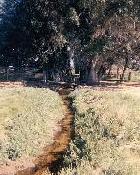
Since she was still a Canadian citizen she had to file an Intention to become a United States Citizen. You had to be a citizen in order to be granted final ownership. It takes five years for this homestead claim to come about for final ownership. On May 25, 1887, she rode the 60 miles to Rawlings and filed a Declaration of Intention to become a United States Citizen at the courthouse. Since it takes about five years after application for a citizenship to become final, her death was within two years after her application. So she didn't have a chance to ever becoming a U.S. citizen. She remained a Canadian citizen until her death, since she was born in Canada.
On March 23, 1888 She rode the train from Rawlins to Cheynene to file claim on her homestead land at the Land Office in Cheyenne. She stated in her claim application: That owing to great distance to the United States Land Office at Cheyenne and great expense of travel that was why she didn’t come in sooner to file her claim. Her land was located at W 1/2 SW 1/4 Sec23 and S2 SE4 of section 22 in township 30 N of Range 85W. This was near the Sweetwater River in Carbon County, near Rawlings, Wyoming. Her homestead application number was 2003 in the Carbon County Courthouse, in Rawlings, Wyoming and with the Land records office in Cheyenne, Wyoming.
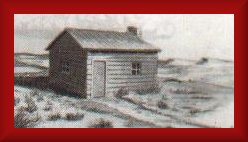
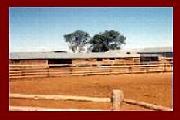
Ellen finally had her own two room log house built. She was now finally a homesteader, having her own land, just like her grandfather in Canada and her father in Kansas did. After her ditches were dug, and a stock building and a corral built to put her livestock in, and her property was fenced in, Ellen decided to go back home for a visit with her folks and see her brothers and sisters that she hadn’t seen in almost two years. She did write back home to Kansas and told them what was happening to her, where she finally started a homestead claim. Working for Jim Averell in his store and cafe for extra money. In fact she wrote home quiet often. But Ellen missed seeing them all. She did have a brother that moved not too far from her in Greeley, Colorado. He was helping his father-in-law start a truck farm, growing vegetables, and shipping them by rail back east, including Red Cloud, Nebraska.
In late May or early June 1888, Jim drove Ellen in his freight wagon the 60 miles to Rawlings, Wyoming to catch the train to go back east to see her family in Kansas. Her father stated that she was there for the months of June and July. She told the family about all that she was doing in Wyoming and how she loved it. When it was finally time to go, she had her brother John Watson take her to the rail station in Red Cloud, Nebraska. She offered him payment for taking her, but he refused it. She instead gave him one of her prized brooches that she wore around her neck. She told him to give it to his future bride.
There is a arrest report in Cheyenne, Wyoming that a Ella Watson was arrested for drunkenness. That was in June 1888. I believe that was a different Ella Watson, because my great aunt never went by the name of Ella. In everything she signed, it was Ellen L. Watson, or Ellen Watson. Even in her divorce from her first husband, she signed it Ellen Pickle, not Ella.
When Ella returned to her homestead claim in Wyoming near the end of July 1888, everyone was glad to see her return. She decided to start her livestock herd. She had 60 acres enclosed by a three wire, four-barbed ‘barbwire’ fence, securely stapled to sturdy, new cedar posts for her pasture. Her ditches were dug to irrigate the pastureland by then. Ellen was going to try and get a brand registered. Most of the small homesteaders were refused their own brands during that time.
The following picture shows one of her pasture lands.
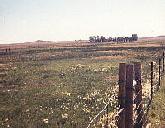
The Wyoming Stockgrowers Association at that time were a powerful group of men that controlled the raising of cattle in Wyoming. They didn't want the small homesteader or rancher to raise his or her own cattle and maybe bring the price of cattle down at the market. They made sure the Wyoming Legislature passed a law known as the Maverick Law. This was passed in 1884. It provided that mavericks, unbranded calves, found alone on the open range, could not be legally be taken off of the range by just anyone. They were to be branded on the neck by an ‘M’ and became the exclusive property of the Wyoming Stock Growers Association, which was appointed the official law enforcement agency for the Wyoming cattle industry. This new law provided that those young calves be auctioned off to the highest bidder only by appointed representatives of the association and that the proceeds went to the association to cover the costs of policing the range and enforcing the law. In the legislative session of 1886, a provision was added that no one could brand calves except those receiving registered brands from the state. No small cattle rancher, or nester, or homesteader, or anybody else, was permitted to bid on mavericks, unless they had a registered brand.
This was almost certain, that the big cattle ranchers, could outbid the small cattle rancher, because they had the money and backing to do it. This usually put some of the small cattle ranchers out of business. If a homesteader had cattle, and some of them strayed too far from his land, then the big cattlemen could round them up, and sell them. It was almost impossible for the homesteader to recover even their calves if they strayed too far from home. The cattle barons would have liked to have gotten rid of the small cattle owners’ altogether.
Before the passing of the Maverick Law, during the spring and fall roundups, the large cattle ranchers gathered in all the mavericks and then divided them up to the different large cattle owners participating in the roundup on the basis of the size of their herds. As homesteaders and small ranchers moved into the country, this became unfair because the roundup also caught the strays belonging to small ranch owners, and they were passed on to the large cattle barons with no recourse for the small ranchers.
With a new Governor, the 1888 Legislature repealed the Maverick Law under heavy popular pressure. Especially from the small cattle and land owners.
The big cattlemen started to illegally grab the land. They were placing movable cabins on some claims and does a filing on them, saying that it was improved upon, then after the claim was filed, moved the cabins to another piece of homestead ground. Then repeat this procedure over and over again. They moved the cabins to the new piece of ground, by rolling the cabins on logs to a new place. Since Jim Averell was a Justice of the Peace, he saw what they were doing and wrote letters about it to the newspaper at Casper, Wyoming. Then the editor at the Casper newspaper reprinted the letters. This made the big cattlemen furious at Jim Averell for his writings.
In the fall of 1888, Ellen bought 28 head of cattle from a emigrant by the name of Engerman at Independence Rock who was passing through. The man had trailed the cattle from Nebraska and was heading toward the Salt Lake basin. The cattle were footsore and were said to be in poor condition. She paid the emigrant a dollar a head for the cattle. She and a neighbor John Fales drove them over to her place and put them in her pasture, so that they would get better. She decided not to brand them that fall, because they were in such poor condition, and probably wouldn’t survive the branding, so Ellen decided to brand them next spring or summer. This way the cattle had time to improve in health. Ellen would have waited until the very last minute to brand, allowing her cattle to put on more weight and gain strength before risking hardship to the sickly cattle. Another problem occurred, Ellen had to get a brand to be placed on the cattle. She applied for a WT brand through the Carbon County Brand Committee at Rawlings on December 3, 1888, but they rejected the brand she wanted. On March 16, 1889 just before branding time, Ella bought a brand from John Crowder, a local rancher nearby. This brand was already registered with the Brand Committee and they accepted it. It was the LU Brand. Now she had a legal brand to put on her cattle. James Averell and Frank Buchanan witnessed the bill of sale. It was recorded in the Book of sales in the Carbon County Courthouse in Rawlins, Wyoming.
The winter of 1888-89 was a harsh winter for the cattlemen. It was one of the worst in its history. The big cattle barons lost over three fourth of their herds on the open range. This put them in a state of disarray.
During this winter, Ellen slaughtered a couple of cows, and gave the meat to some of the neighbors. Some of the other homesteaders around the area didn’t have enough to eat and she made sure that they did, by supplying them with meat. One of the neighbor’s wives came down with a fever during this time, and Ellen went to her home and sat with the woman for about a week until she was back on her feet. Making soup for her and made sure her family was taken care of. Ellen made her own dresses, and used her sewing machine to make clothes for other people, which helped her earn a little money. She probably mended some of the cowboys’ clothes that were torn on the open range while herding cattle.
Early in 1889, Ellen unofficially adopted a eleven-year-old boy by the name of Gene Crowder. Who came from a not so pleasant home. Gene Crowder’s father, John M Crowder, reportedly a widower, was a drifter and sometime freighter who lived south of Whiskey Gap, and was allegedly a heavy drinker. As a widower with several young children, he was too poor to take care of young Gene, maybe, that was why Ellen took Gene into her home.
She had another boy by the name of John L DeCorey, at the age of fourteen, working for her. She was paying him a small wage to work for her.
Jim’s twenty-year-old nephew, Ralph Coe, came from Eureka, Wisconsin on April 10 to spend some time on his uncle’s Wyoming homestead. Jim put him in charge of taking care of his store, when he went to town for supplies.
Ellen had plenty of help taking care of her small ranch. She had a close friend of her’s and Jim’s by the name of B.Frank Buchanan that sometimes would help out on the ranch with the cattle, or he would help mend fences and do other chores around the ranch. He also helped Ellen brand her cattle during branding time, which was in the middle of July 1889. She had about 41 head of cattle by now, since some of the females gave birth to some calves.
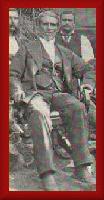
Albert John BOTHWELL, was a nearby neighbor to Jim Averell and Ellen Watson. It was in his pasture land that Jim and Ellen homesteaded and controlled Horsecreek. He lived only about a mile from their homestead claims. From George Hufsmith's book "Lynching of Cattle Kate, 1889": Sometime around 1883, or maybe a little earlier, Bothwell moved into southeastern Wyoming and soon began to use huge sections of open range. Before long he decided to expand into the area around the Sweetwater River in central Wyoming.
Bothwell's main sphere of influence in the Sweetwater Valley was the country around the confluence of Horse Creek and the Sweetwater and North Platte Rivers, where he built his first ranch building at the northwestern end of Steamboat Rock. He ran cattle in this valley extending up north to where the Sweetwater River finally dumped into the North Platte River. On the northwest, the land he used ran back up against the foothills of the Rattlesnake Range. To the south his spread extended more than twenty miles clear down to the Arkansas Creek south of the Sentinel Rocks, and even south of Ferris Mountain to Bothwell Creek. On the Northwest, the range extended up from Horse Creek to within twenty miles of where the Military Road crossed over the North Platte River on the old Government Bridge, a truly humongous chunk of land. Now, Al Bothwell didn't own all of this land, he just acted like it.
Jim Averell did give a right of way through his property for Bothwell to irrigate his pastureland. A.J. Bothwell belonged to the Wyoming Stock Growers Association. He had his own brand and hired several hands to help herd his cattle. His financial backing came from his wealthy father who was a merchant in Iowa. He was one of the most dreaded cattlemen that lived near the homesteaders. He did anything to get the homesteaders off his so-called land. He became furious when Jim and Ellen homesteaded on his best pastureland. He approached Ellen several times about buying her homestead land, but each time she refused him. A few times Jim and Ellen threatened to cut his water supply off, which made him even more furious. He had to find someway to get their land. He had some of his cowhands continue to check on Ellen and Jim to make sure that they didn’t do anything out of the ordinary. When Jim wrote articles in the newspapers about how the cattle barons were land grabbing, that made him more furious and he found ways to harass them, by having his cowhands place skulls and cross bones on their doorways. He did fence in land that didn’t belong to him. He tried to start a town named Bothwell, but it never materialized, only on paper in the courthouse. When he sold his property years later, the new owners had to straighten out the deed. Bothwell had his fences in areas that he didn't own. It took the new owners a long time to straighten this out.
On 20 July 1889, a stock detective by the name of George Henderson rode over and checked on Ellen's pasture in the early morning, and found cattle in it, and some with fresh brands on them. This to his thought, she had some stolen mavericks in her pasture field. That news of Ellen’s alleged illegal branding spread to Bothwell, and he discovered a long sought after opportunity, an excuse to rid the countryside of Ellen Watson and Jim Averell. Ellen had a couple more years on improving the land, and then the homestead would be hers. Now was the time to get rid of her, before the land became hers legally through the homestead act.
I believe that Bothwell knew that the cattle Ellen had were legal, and that she bought them at Independence Rock the past fall. He probably knew too, that they were in poor condition when she brought them home. He had to of known, because he only lived about a mile from her homestead place, and could look out his front room window, and see her beautiful place. This made him envious because her pasture field use to belong to him, where his cattle use to graze, until she took it away by homesteading on it and fencing it in and started to control the water from the nearby Horse Creek.
Picture of Ellen's homestead claim looking from where Al Bothwell use to have his ranch house.

. In order for Ellen to get the cattle to her place, she had to take them right past his front door on his property. He probably rode right past her place to get to his pastures. I believe that he even mentioned it to Ellen that the cattle were in such poor condition, that they wouldn’t make it through the winter. He was probably surprise when spring came and they did make it. When the spring came, Bothwell had to of known of Ellen’s little herd was expanding some. How can anyone mistake the bawling of calves in the spring time, when they are in a pasture field next to your house. Also, he had to known when she was branding them. You can smell the searing of the hides as the branding iron is struck against the side of the cattle and calves. She either branded them in her corral or in her pasture fields. Bothwell did not want any of his neighbors know that he knew all of this. He fabricated a story about her, and how she was increasing her stock, telling everyone that the young cowboys on the ranches were taking her young calves for favors from her. That both Ellen and Jim were rustling cattle and branding them.
Since the other cattlemen that he knew, only knew that they gave him some trouble by homesteading on his best pasture land, they probably believe rest of his story.
Bothwell sent for other cattlemen in the immediate area to meet him for an urgent meeting in his home during the early morning hours. During this time of year, everyone in the valley was helping out in the roundup. So Bothwell had an easy way of inviting these different cattlemen over. Several of these cattlemen had ranches several miles away, and really didn't know Jim and Ellen that well, but were there for the summer roundup that day. It was just a roundup to brand the cattle they located. Bothwell probably told the men that Jim and Ellen were stealing cattle, or accepting stolen cattle from the local cowhands. More than six ranchers were at the meeting. They planned the demise of the two homesteaders. One of the men rode over to Ellen's pasture field in the early morning hours and seen some freshly branded cattle there. He rode back and told the others about it.
The six ranchers were: M. Ernest McLean, Robert ‘Captain’ M. Galbraith, John Henry Durbin, Robert Conner, and Tom Sun. Albert J. Bothwell was the ringleader. There are reports that there were more cattlemen at the early morning meeting, then the original six. Some didn't want to take part in the lynching party, so left.
After the meeting they all decided to ride over to Ellen’s homestead and see what Bothwell was talking about and see the evidence for themselves. They wanted to check to see what the rider that went over earlier saw. They mounted up and rode over to Ellen’s homestead for a first hand look, with Tom Sun tagging along in his tandem seated buggy. When they arrived, the six cattlemen saw just what Bothwell knew they would see. It was now somewhat after noon.



 me with any comments feel free!!!!
me with any comments feel free!!!!
 Get Your Own Free Home Page
Get Your Own Free Home Page